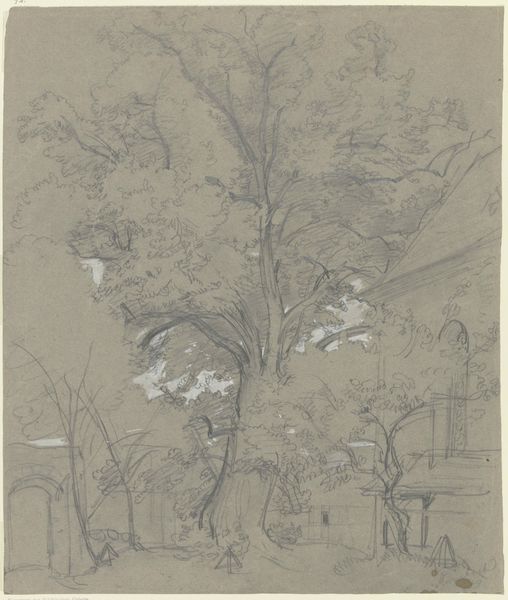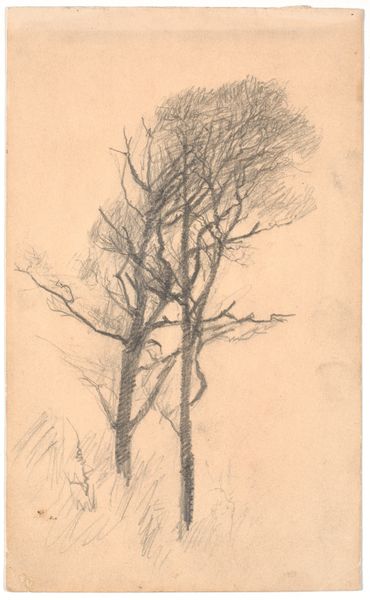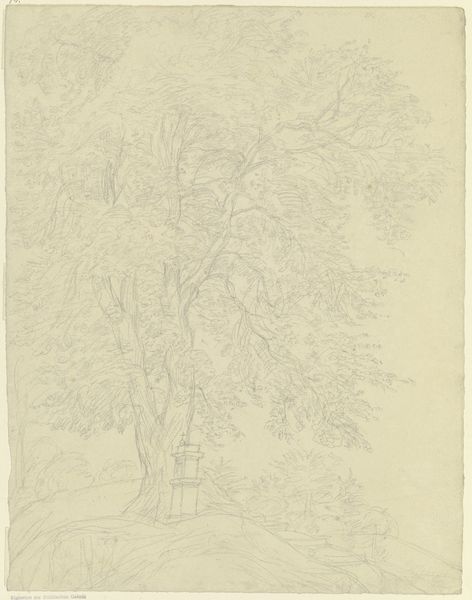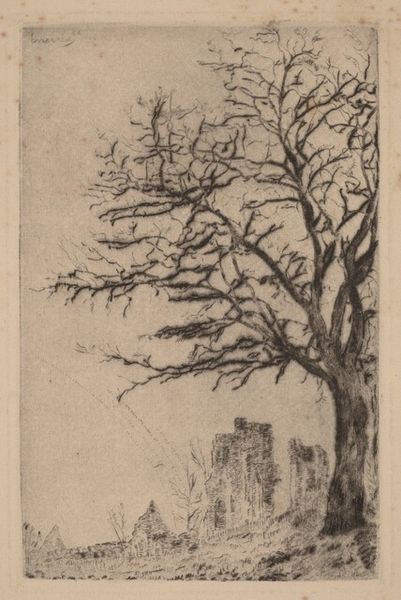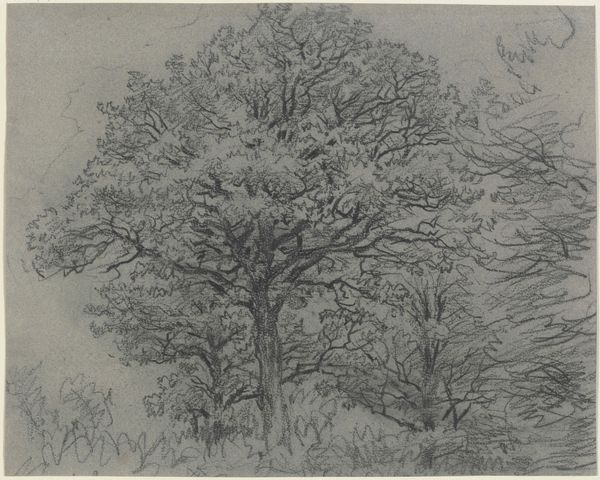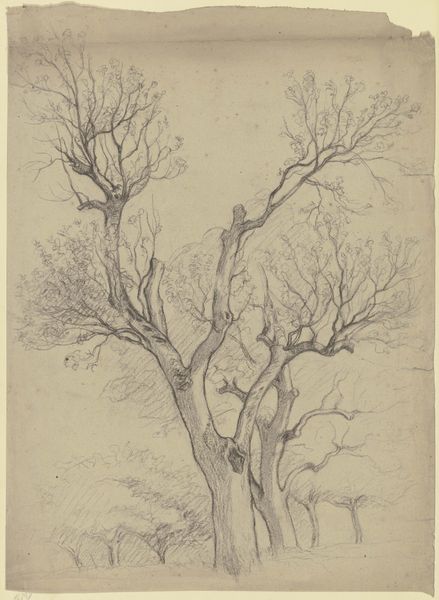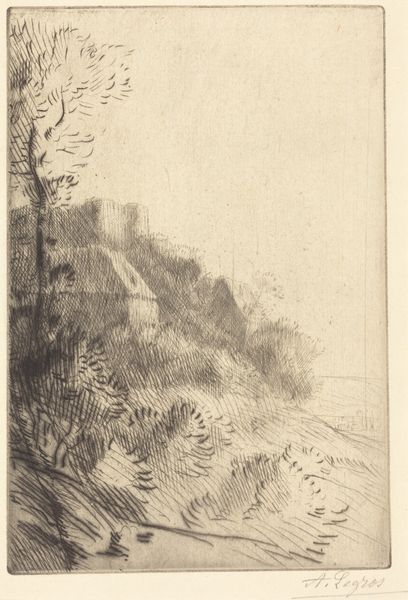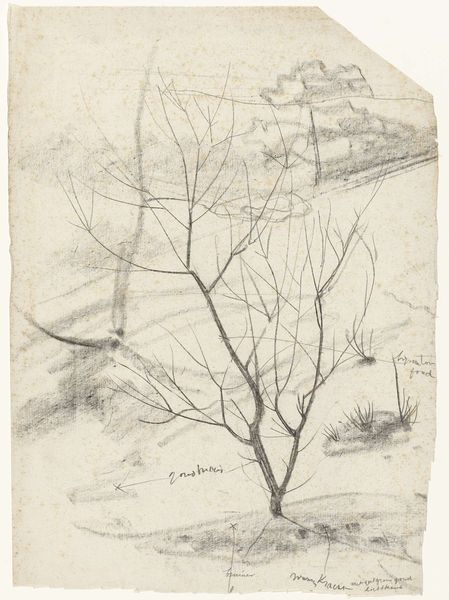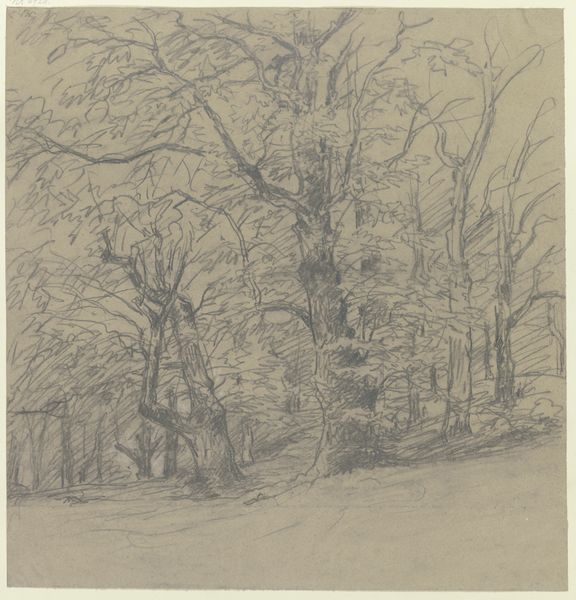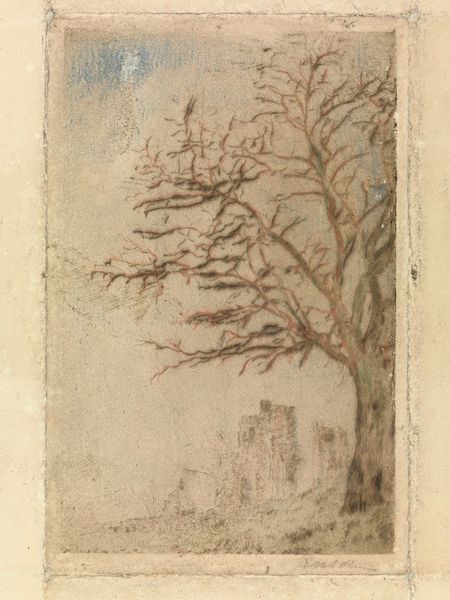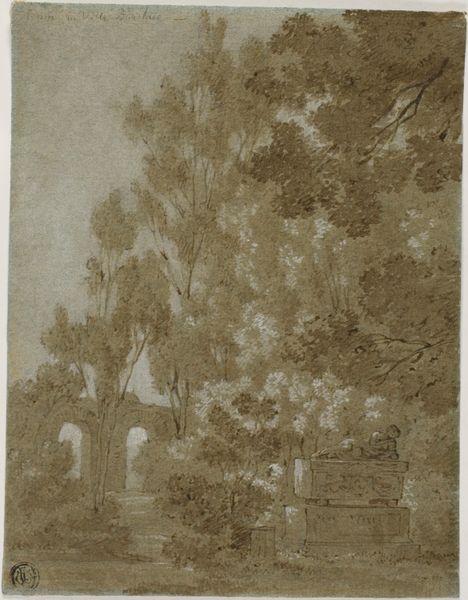
drawing, pencil
#
drawing
#
pencil sketch
#
landscape
#
etching
#
pencil
#
realism
Copyright: Public Domain
Curator: Here we have Friedrich Wilhelm Ludwig's "Pinie im Giardino Barberini in Rom," a pencil drawing dating to March 1851, housed here at the Städel Museum. Editor: There's something so delicate about this rendering; the light is captured beautifully despite the simple medium. The lines feel almost like whispers. Curator: I find the choice of the pine particularly telling. In ancient Roman culture, the pine tree held great symbolic significance. Associated with fertility, immortality, and even military prowess, it was a common motif in funerary art. It speaks volumes about Ludwig's potential fascination with the weight of history embodied within the landscape itself. Editor: You see fertility, I immediately register resilience. This isn't just a sketch of a tree; it is a meditation on material and labor. Consider the production of pencils in the mid-19th century: the mining of graphite, the shaping of wood, the skill involved in creating such a finely pointed tool, and then consider the labor the artist expended to create such fine, intricate marks across the paper. All this labour represented in a landscape view. Curator: That is a very pragmatic interpretation. I cannot help but think about how pinecones and their association with the pineal gland. The 'pine cone' may symbolize spiritual enlightenment. Editor: Symbolism, always a favourite topic. To me, that reading pulls it away from the real context. What fascinates me are the visible layers and labour the artist undertakes: there's a rawness to pencil sketches that transcends mere representation and becomes evidence of a working process. The humble pencil itself has undergone an evolution through craft and technological innovation; consider what materials such as the ground pigments do for creating those subtle effects. Curator: Interesting how our focus diverges. For me, the very 'real' act of depicting that particular tree links it to larger symbolic meanings; its very structure speaks to how one era interprets older themes. Editor: A compelling point! Ultimately, Ludwig's study offers a window into his moment in time, his tools, his place, and into the materials that make such acts of observation possible. Curator: A moment captured, echoing long into the past and rippling into the present through our interpretations.
Comments
No comments
Be the first to comment and join the conversation on the ultimate creative platform.

